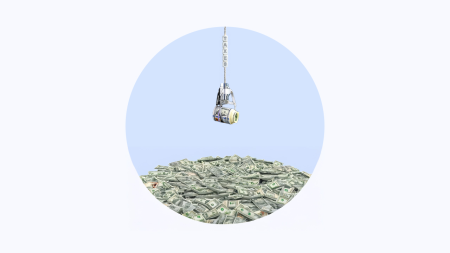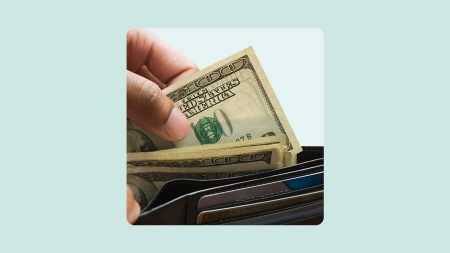A sudden spurt of economic volatility sent mortgage rates down this week. They’re averaging 6.59 percent — their lowest point since May 2023, according to Bankrate’s national survey of lenders.
This shift is an opportunity for homebuyers. But it’s also a chance for current homeowners to consider refinancing, replacing their current mortgage with a cheaper one.
In the last few years, Americans all but stopped refinancing their mortgages, as interest rates shot from 3 percent during the pandemic to a high of 8 percent in late 2023. But now, swapping mortgages might make sense for some homeowners, especially those who financed when rates were on the upswing.
“The refinancing door has swung open. If you have an adjustable rate mortgage you’re looking to get out of, this is your chance,” says Greg McBride, Bankrate’s chief financial analyst. “Mortgage rates are likely to fall further in the months ahead, but there are no guarantees and current rates are a bird in the hand for prospective borrowers.”
As of Aug. 9, the national average 30-year fixed refi’s APR was 6.55 percent, and the average 15-year fixed refi’s APR 5.98 percent, according to Bankrate’s survey of the largest U.S. refinance lenders.
The refinancing door has swung open.
— Greg McBride, CFA , chief financial analyst for Bankrate
Deciding whether to refinance
It’s not just about the rates, however. Deciding whether to refinance is complicated by the reality that refis aren’t free.
For one thing, you’ll incur a whole new round of closing costs, since getting a refi basically amounts to taking out a new mortgage. These costs can run between 2 percent and 5 percent of the amount you refinance.
You’ll need another credit score check, and you’ll have to pony up for an origination fee, an appraisal fee and title insurance. Some states, such as Florida, collect a tax on mortgages that boosts the cost of refinancing even further.
All of these closing costs can add up to thousands of dollars.
For that reason, it probably doesn’t make sense to refinance for a half-point reduction in your rate, says David Druey, regional president at Centennial Bank. “My rule of thumb is at least a point and a half,” he says.
Calculating the costs of a refi
Because you’ll incur new expenses, you need to make sure a refinance makes sense. If you‘ve got a $400,000 loan at 8 percent, for instance, the monthly payment is $2,935. If you can cut the rate to 6.5 percent, your payment falls to $2,528 — a savings of $407 a month. Assuming you’ll incur $10,000 in closing costs on a refinance, you’d need about two years to recoup those costs in the form of lower payments.
There’s no right or wrong answer about how far out your break-even point should be. But calculating it can help you decide if a refi is worthwhile. Bankrate’s mortgage refinance calculator walks you through the math.
One other thing to keep in mind: Mortgage “seasoning” requirements might apply. For loans backed by the U.S. Department of Veterans Affairs (VA) and the Federal Housing Administration (FHA), you need six months of mortgage payments under your belt before you can refinance. So if you happened to close your loan in April or May 2024, when rates were at 7.25 percent, it’s unlikely you can refi just yet.
Seasoning restrictions don’t apply to conventional loans.
Pros and cons of mortgage refinance
Pros
- You could lower your interest rate.
- You could lower your mortgage payment.
- You could decrease your loan’s term and pay it off sooner.
- You could receive additional cash, borrowed against your home’s equity, at closing (cash-out refi).
- You could change from an adjustable-rate to a fixed-rate mortgage.
- You might be able to cancel private mortgage insurance premiums, if you’ve built up enough equity in the home since your original mortgage.
- You likely won’t need to make a down payment.
Cons
- You’ll have to pay closing costs.
- You might have a longer loan term, adding to your costs and delaying your payoff date.
- You have less equity in your home if you take cash out.
- You might need to deal with borrower’s remorse if rates drop substantially after you close.
- Your credit score will temporarily take a hit.
- It’s not an overnight activity: The refinancing process takes, on average, 45 days (though it can be as little as 15 days).
- It restarts your amortization schedule, which isn’t to your advantage if you’ve already paid off a significant chunk of your mortgage.
Read the full article here












